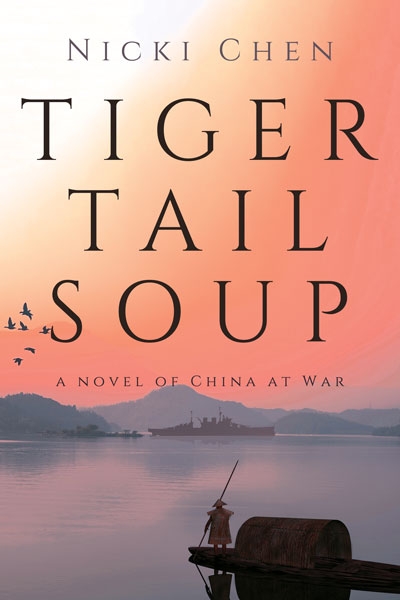 A beautiful day in August. Two of my daughters and one daughter’s family were visiting. We toured the Amazon Spheres and had lunch at a restaurant nearby. Next stop, beautiful Bainbridge Island.
A beautiful day in August. Two of my daughters and one daughter’s family were visiting. We toured the Amazon Spheres and had lunch at a restaurant nearby. Next stop, beautiful Bainbridge Island.
Leaving Seattle in our wake, we sailed across Puget Sound on the jumbo class ferry, the M/V Wenatchee.
Daughter #2 googled (or maybe she Bing-ed) Bainbridge Island for something to do while we were there and found the Bainbridge Island Japanese American Exclusion Memorial. It sounded good to the rest of us, so we drove over.
The memorial is fairly new, first opened to the public in 2011.
 If you’ve read the novel Snow Falling on Cedars by David Guterson or seen the movie of the same name, you know the story. Less than four months after the attack on Pearl Harbor, 227 Japanese Americans were forcibly removed from their homes on Bainbridge Island by US Army soldiers and sent to the Manzanar concentration camp in California. They were the first of more than 120,000 Japanese Americans to be sent away.
If you’ve read the novel Snow Falling on Cedars by David Guterson or seen the movie of the same name, you know the story. Less than four months after the attack on Pearl Harbor, 227 Japanese Americans were forcibly removed from their homes on Bainbridge Island by US Army soldiers and sent to the Manzanar concentration camp in California. They were the first of more than 120,000 Japanese Americans to be sent away.
 The memorial, which is on a lovely, woodsy site, has many moving reminders of what the displaced people experienced and felt.
The memorial, which is on a lovely, woodsy site, has many moving reminders of what the displaced people experienced and felt.
 Here are couple of quotes from people who remembered that time:
Here are couple of quotes from people who remembered that time:
“We could only take what we could carry and I couldn’t fit everything in my suitcase so I had three layers of clothes. on. No one told us we’d be going to the desert.” Kay Sakai Kakao
“I was scared. I was confused. Where are they taking me? How long will we be gone? How will I protect my kid?” Fumiko Nishinaka Hayashida
 After we toured the memorial, my son-in-law and I mentioned the similarity between that internment and those that are going on today. The image that came to my mind was that of the detention center for immigrant children in Tornillo, Texas, a huge tent city in the middle of the desert that looks a lot like the Manzanar and Minidoka concentration camps.
After we toured the memorial, my son-in-law and I mentioned the similarity between that internment and those that are going on today. The image that came to my mind was that of the detention center for immigrant children in Tornillo, Texas, a huge tent city in the middle of the desert that looks a lot like the Manzanar and Minidoka concentration camps.
“These are the times that try men’s souls,” I said as we walked up a trail that snaked along the hillside.
“… the summer soldier and the sunshine patriot ….” my son-in-law replied, continuing to quote Thomas Paine. Those words, he said, were carved on the wall of his high school. He often took inspiration from them, especially after he joined ROTC and later when he served in the army.
Here’s a little more of Thomas Paine’s essay written December 23, 1776.
THESE are the times that try men’s souls. The summer soldier and the sunshine patriot will, in this crisis, shrink from the service of their country; but he that stands by it now, deserves the love and thanks of man and woman. Tyranny, like hell, is not easily conquered; yet we have this consolation with us, that the harder the conflict, the more glorious the triumph. What we obtain too cheap, we esteem too lightly: it is dearness only that gives every thing its value. Heaven knows how to put a proper price upon its goods; and it would be strange indeed if so celestial an article as FREEDOM should not be highly rated.
Whatever you may find trying in your life or in the life of your country, I hope you too will find inspiration in these words of Thomas Paine.



Thank you for this, Nicole. I really need it–
You’re welcome, Jan. If you’re referring to Thomas Paine’s words, you can thank my son-in-law for going beyond my sigh in the form of a brief historical quote.
Is the memorial anywhere near the museum on Bainbridge–not far from ferry terminal? In the museum they have a great deal of information/pictures/newspaper articles dealing with that horrible time in our history. One of the stories I learned about there (several years ago) was about a white neighbor family that worked the land, and took care of the property/buildings belonging to a Japanese family; then returned it all to them, several years later, when they returned from the internment/ concentration camp. A lovely outcome alongside of the shameful failures. Thanks for this reminder. What is happening now is despicable, as well.
The Memorial is not in town. It’s on the other side of a little bay. You can see the ferry landing from there. The spot was chosen because that was the ferry landing in 1942 when the people were taken away. The picture I have of the farmer wiping his brow is on the walk down to the ferry. Fortunately, there seem to be lots of good stories beside the bad ones. Before 1942, the town was well integrated. All the children went to school together.
It was a humiliating experience for people who considered themselves to be loyal Americans. But at least they were able to keep their families together. In future history books, they will read about asylum seekers from Central America whose children were taken away and put in detention facilities.
Difficult times to remember. As much as this memorial is gorgeous it doesn’t erase what happened. Yet it serves the crucial point to remember so we cannot replicate. The current separation of children and families at the borders is heartbreaking and unacceptable but cannot really be compared to the Japanese put in camps since the Japanese men, women and children were American citizens. Absolutely horrific and inexcusable. The same was done during the same war, although sooner, in France when French citizens who were Jewish were arrested and parked at the Velodrome in Paris before being shipped by train to concentration camps where most died. La Raffle du Vel d’Hiv is the most shameful thing French people did against their own people.
Important post, Nicki.
Although we can’t undo the wrongs of the past, I’m glad our government eventually apologized for the detention of Japanese-Americans. In 1988, President Ronald Reagan offered a formal apology and paid out $20,000 to each of the surviving victims. Then again, in 1993, President Bill Clinton sent a letter of apology to each of the survivors.
These official apologies go a long way, I agree with you, Nicki.
I still remember when we had these camps as a topic in history class. It is so upsetting what people are able to do. In this case people distanced themselves from their own friends and neighbours because of their nationality. One can only be glad that it did not take such horrible forms as in Germany!
Japanese men came to the island in 1880 to work in a saw mill. In 1908, one Japanese family started a strawberry farm. By the time they were taken to internment camps, Japanese-Americans owned strawberry farms all over the island. In most cases, they never got their land back. The internment camps were hot and dusty, but, from what I understand, the people weren’t mistreated and families were allowed to stay together.
Thanks for sharing. I didn’t even know there was an internment until I randomly found Jeanne Watasuki’s memoir, “Farewell to Manzanar” in high school. Just as white teachers gloss over the horror of slavery, they also gloss over the Japanese-American internment camps.
How quickly we forget.
I suppose each of these regrettable historical cases causes a particular kind of suffering. For the Japanese-Americans who were interned, I think, from what I’ve heard the survivors say and write, the thing they can’t get over is that they were betrayed by the country they had chosen as their own.
We never learn from history. We adjust the verbiage to fit the case.
Words are so important. Even when we try our best to say what we mean, we don’t always succeed. But words can also be used to mislead and manipulate.
These are indeed trying times. It’s more important than ever for us to be kind to each other.
Yes, we must be kind to each other and also support and defend those who are mistreated.
Not a place you get to visit every day, and not every day you see what goes on a detention camp right in front of you, or at least being reminded of such atrocious times in the past vividly through a memorial. Interesting to note similarities between camps now and then, and the link that you showed illustrates this. Seems like those within the camp have no say and no choice…and you wonder why this is still happening today. Could be due to power and competition, and nothing we can change for the time being.
This memorial, which is on the same site from which the Japanese residents of Bainbridge Island were taken away, was not opened until 69 years later. It’s been paid for mostly by current residents of the island. Besides honoring the Japanese who were exiled from the island, it also celebrates, as its website says, “this island community, which defended its Japanese-American friends and neighbors, supported them while they were away, and welcomed them home.” I thought that part of the story was very uplifting. There were many fascinating stories related at the memorial. I wish I could have told them all.
You said we wonder why these things keep happening. You mentioned power and competition. I would add, fear.
A salutary post, Nicki
Thanks, Derrick.